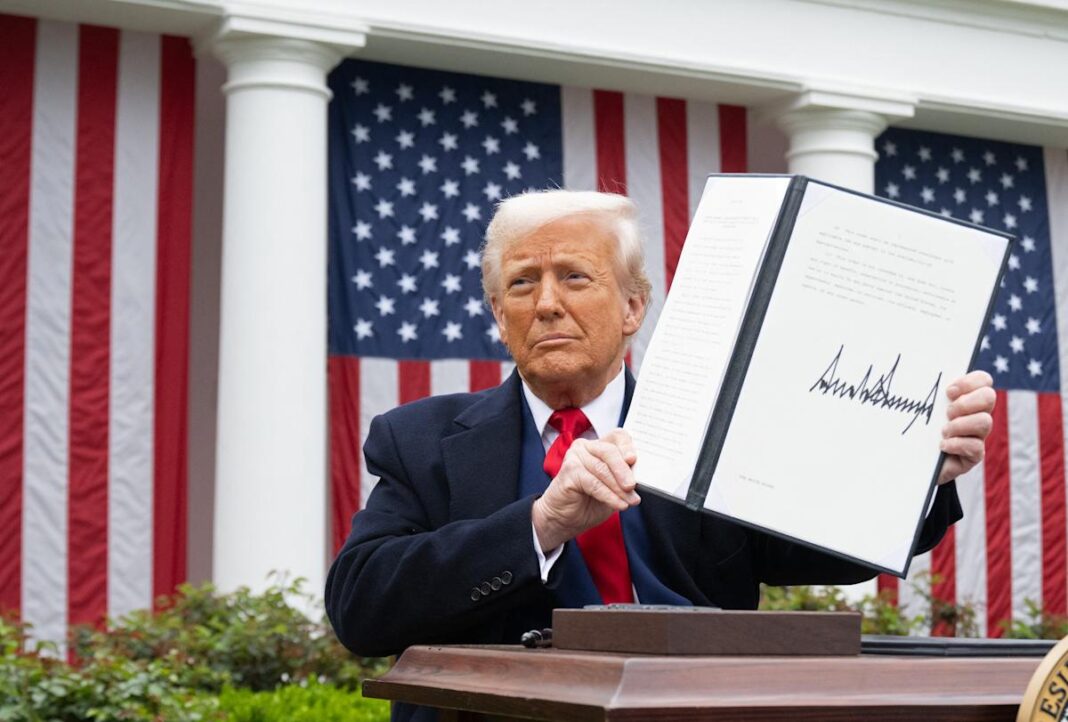The Implication of Trump’s Tariff ‘Dividend’
In a recent statement that has sparked significant debate, President Trump announced that most Americans could expect to receive a “dividend” of $2,000 or more due to the revenue generated from his administration’s sweeping tariffs. This proclamation highlights not only the ongoing economic policies under Trump’s leadership but also the complex interactions between tariffs and everyday American finances.
Understanding Tariffs and Their Revenue
Tariffs, which are taxes imposed on imported goods, have been a cornerstone of Trump’s economic strategy. The administration argues that these levies are designed to bring in substantial revenue, which in theory could be redistributed back to the American populace. For many, the idea of receiving a direct financial benefit from tariffs presents an enticing prospect.
Trump’s assertion that “people that are against tariffs are FOOLS!” illustrates a passionate defense of his tariff-based economic approach. The President maintains that while consumers may experience some immediate costs due to higher prices on imported goods, the long-term benefits—such as increased jobs and economic growth—far outweigh these drawbacks.
The Role of Tax Cuts
Treasury Secretary Scott Bessent has noted that this $2,000 dividend might manifest as tax cuts outlined in a recent economic policy bill. This perspective begs the question of how directly tariffs can translate into wealth redistribution. While tariffs generate revenue that can be reinvested into the economy, the true impact on individual taxpayers remains to be seen.
Bessent’s comments came shortly after Trump’s claims on social media, and while he emphasized potential benefits, he also acknowledged the escalating complexities tied to tariffs. He posited that the ultimate goal of these tariffs is to encourage investment within the United States.
Consumer Concerns: A Different Perspective
Despite Trump’s enthusiastic proclamations, the reality for many American consumers is significantly more complicated. Acknowledging the pushback, Trump recently conceded that U.S. consumers are “paying something” for these tariffs, suggesting an evolving understanding of the economic landscape.
The contention surrounding tariffs rests heavily on the dichotomy between theoretical benefits and practical costs. Economists highlight that tariffs can act as a tax on consumers, raising prices for everyday goods and thereby increasing living costs. As pricing pressures intensify, many households may find it challenging to reconcile the benefits espoused by the administration with their own financial realities.
Legal Scrutiny and Future Implications
The strength of Trump’s tariff strategy faces legal scrutiny as the U.S. Supreme Court prepares to examine the constitutionality of his tariff impositions. This judicial review introduces an element of uncertainty; if the Court rules against these tariffs, it could potentially unravel the economic framework Trump has built, raising questions about future trade policies and their ramifications.
Both conservative and liberal justices have expressed skepticism regarding Trump’s claimed authority to impose these extensive tariffs, indicating that a ruling against them could have widespread implications not only for the administration but also for international trade relations.
Global Trade Dynamics
As the U.S. navigates its tariff landscape, other nations are bracing for changes that could redefine economic interactions. Recently, the U.S. and China initiated discussions to ease tensions, showcasing how tariffs have wide-reaching consequences that extend beyond American borders. With concerns over supply chains and export controls gaining traction, the global ramifications of Trump’s tariffs are just as critical as their domestic impact.
Market Reactions and Business Perspectives
In the financial markets, reactions to Trump’s tariff policies have been mixed. While some sectors, particularly those tied to domestic production, may benefit, others—like those heavily reliant on imports—face increased pressure. For instance, industries such as automotive manufacturing have historically struggled with the costs of imported materials, leading many to question how long they can sustain profitability under current tariff conditions.
The potential introduction of regulations tied to tariffs can further complicate business strategies, adding layers of uncertainty to investment and production decisions.
Conclusion
President Trump’s assertion that Americans could see significant payouts from tariffs highlights the complexities inherent in current U.S. economic policies. As the legality of these tariffs comes under judicial examination, the practical implications for consumers, businesses, and international trade remain a focal point of discussion. The narrative surrounding tariffs is thus not just about the numbers; it’s also about real experiences and impacts on everyday lives.



